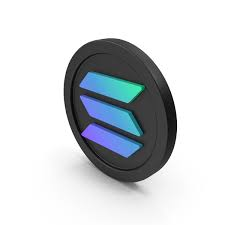Introduction
Sol Coin, also known as Solana (SOL), has become one of the most popular cryptocurrencies in the digital market. With its fast transaction speed, low fees, and growing adoption, Solana has gained a strong reputation among investors and blockchain enthusiasts. In this guide, we will cover the use of Sol Coin, its history, disadvantages, high price milestones, and future potential.
Whether you are an investor, trader, or crypto learner, this article will give you a clear understanding of Solana and its role in the crypto ecosystem. Solana Official Website – Direct source for Solana ecosystem, updates, and official news.
Use of Sol Coin
Sol Coin serves multiple purposes within the Solana blockchain ecosystem:
-
Transaction Fees – SOL is used to pay for all transactions and smart contract executions on the Solana network.
-
Staking – Investors can stake Sol Coin to earn rewards while helping secure the network.
-
DeFi Applications – Many decentralized finance (DeFi) platforms on Solana rely on SOL as a utility token.
-
NFT Ecosystem – Solana has become a hub for NFTs, and SOL is the primary currency used to buy and sell digital collectibles.
-
Governance – Future updates may allow SOL holders to participate in governance and decision-making processes.
Sol Coin is not just a cryptocurrency; it is the backbone of an entire Web3 ecosystem that supports dApps, NFTs, and DeFi solutions.
Disadvantages of Sol Coin
While Solana has gained popularity, Sol Coin also has several disadvantages:
-
Network Outages – Solana has faced multiple network downtimes, raising concerns about reliability.
-
Centralization Concerns – Compared to Bitcoin, Solana has fewer validators, which makes some critics argue it is less decentralized.
-
High Competition – Competing blockchains like Ethereum, Cardano, and Avalanche challenge Solana’s dominance.
-
Scalability Risks – While Solana is fast, its rapid growth might create future scalability issues.
Investors should be aware of these risks before investing in Sol Coin.

History of Sol Coin
The Solana project was founded in 2017 by Anatoly Yakovenko, a former Qualcomm engineer. The main goal was to solve blockchain scalability without compromising security or decentralization.
-
2019 – Solana launched its testnet.
-
2020 – The mainnet beta went live, and Sol Coin started trading publicly.
-
2021 – Solana gained massive popularity, becoming one of the top 10 cryptocurrencies by market cap.
-
2022–2023 – Despite bear market challenges, Sol Coin maintained strong adoption in NFTs and DeFi.
Today, Solana is considered one of the most innovative blockchain projects in the crypto space.
High Price of Sol Coin
Sol Coin has experienced significant price growth:
-
In early 2020, SOL traded under $1.
-
By November 2021, Sol Coin reached an all-time high (ATH) of around $260.
-
During market downturns, its price fell below $10.
-
In 2024–2025, Sol Coin has shown strong recovery and continues to attract new investors.
The high price of Sol Coin during bull markets proves its potential, but like all cryptocurrencies, it remains highly volatile. CoinMarketCap – Solana Price – Real-time SOL price, charts, and market cap.
Future of Sol Coin
The future of Sol Coin looks promising due to several factors:
-
DeFi Growth – With more DeFi apps launching on Solana, the demand for Sol Coin will increase.
-
NFT & Web3 Expansion – Solana is becoming a leading choice for NFT creators and Web3 developers.
-
Institutional Interest – More institutional investors are exploring Solana due to its speed and low fees.
-
Scalability Improvements – Future upgrades may make the network more stable and reliable.
Analysts believe Sol Coin could become one of the top 3 cryptocurrencies globally if adoption continues.
Conclusion
Sol Coin (Solana) is more than just another cryptocurrency. It powers a fast, scalable blockchain ecosystem that supports NFTs, DeFi, and decentralized applications. While Solana faces challenges such as network outages and competition, its future potential remains strong.
If you want to learn more about cryptocurrency trends, you can explore detailed resources at Cryptocurrency Knowledge.
For beginners who want to understand how Sol Coin compares with other digital assets, check out our crypto information section at Cryptocurrency Knowledge.
With innovation, scalability, and adoption on its side, Sol Coin may continue to play a major role in the future of blockchain technology.